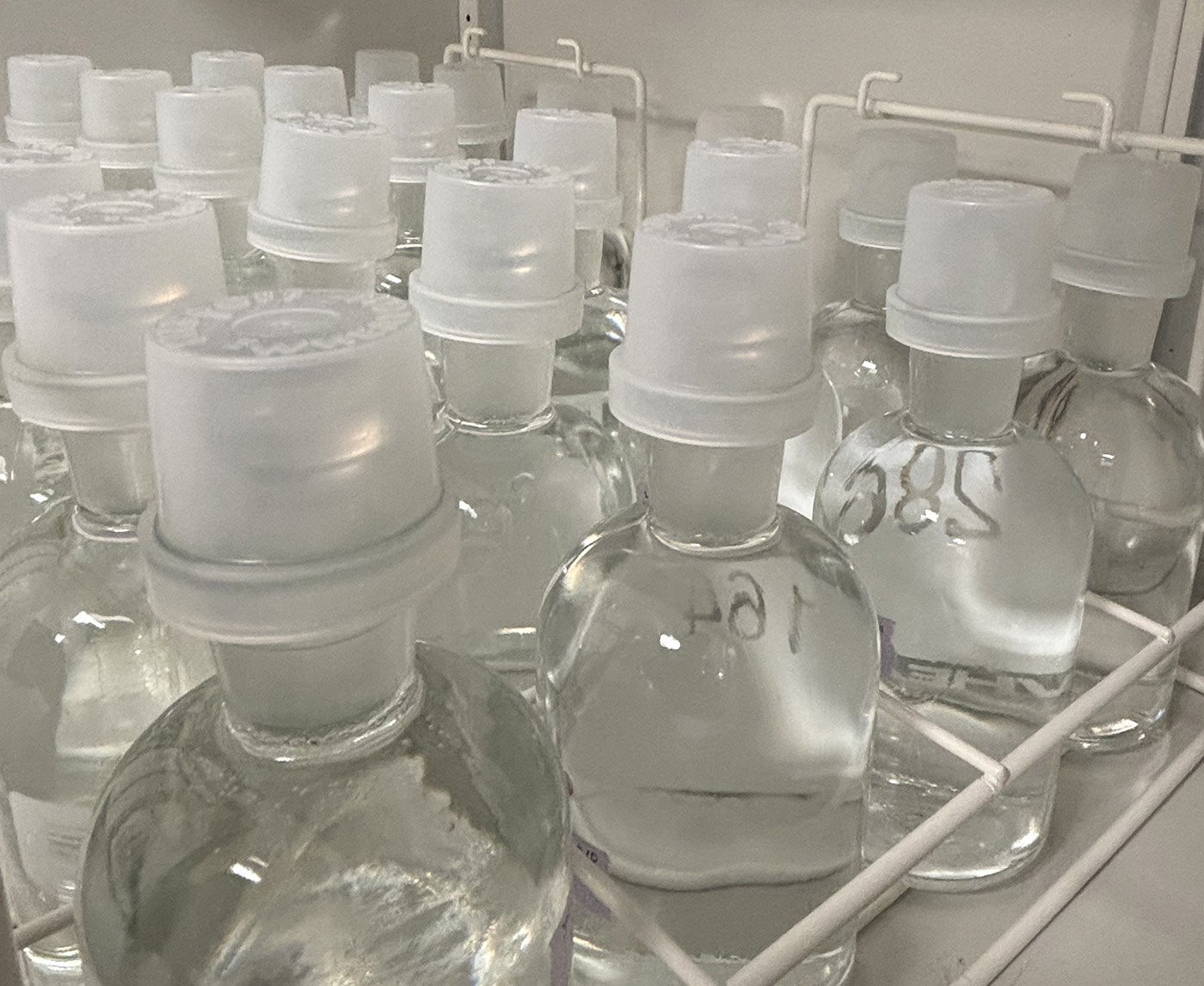Summary
ISO 14851 is a test that determines the ultimate biodegradability of plastic materials in an aerobic, aqueous medium. This test measures the oxygen demand during biodegradation in a closed respirometer. This test usually lasts for two months, however, it can be extended up to six months depending on your needs.
ISO 14851 Testing Method
ISO 14851 determines the biodegradability of a plastic material by measuring the oxygen consumption during the biodegradation process over two to six months. This test takes place in a closed bottle setup with headspace at a temperature between 20ºC and 25ºC. Once the testing period is complete, the oxygen consumption is measured, usually by measuring the quantity of oxygen required to compensate for the consumed oxygen to maintain a constant gas volume or pressure in the flask.
This test can be used on natural and/or synthetic polymers, copolymers, or a mixture of these, and plastic materials that contain additives such as plasticizers, colorants, and other compounds. It is also appropriate for water-soluble polymers.
Information on the toxicity of the test substance is helpful in determining the appropriate dosage so that the material does not inhibit bacteria at the concentration tested.
Here are some additional details about the ISO 14851 test method:
- Materials that can be tested:
- Natural and/or synthetic polymers, copolymers or mixtures of these
- Plastic materials which contain additives such as plasticizers, colorants or other compounds
- Water-soluble polymers
- Materials which do not inhibit the microorganisms present in the inoculum
- Test substance requirements:
- Formula needs to be known in order to calculate the ThOD
- Powder form is preferable with a maximum particle size of 250um in diameter
- Similar shapes of different substances should be used if they are to be compared
- Plastic materials without additives are preferable
- Measurement: Oxygen consumption
- Temperature: 20-25°C
- Reference: Aniline and/or a well-defined biodegradable polymer (e.g. microcrystalline cellulose powder, ashless cellulose filters or poly-β-hydroxybutyrate)
- Test substance dosage: At least 100 mg/L of the substance, or 170mg/L of ThOD
- Lower concentrations can be used if the sensitivity of the respirometer is adequate
- High mineral medium concentration should be used if the test substance dosage is high
- Inoculum: Activated sludge, preferably used on the same day of collection or within 72 hours
- Pre-exposed inoculum is generally not used, but could also be used depending on the purpose of the test
- Inoculum dosage: 30-1,000mg/L of total suspended solids
- Number of reactors: 3 for blank control, 2 for reference control, and 3 for test substance
- Duration: Normally up to 2 months; however, the test can be prolonged up to 6 months if significant biodegradation is still being observed
- Upon termination, pH, nitrate, and nitrite are determined to correct the calculated degree of biodegradation due to nitrification
- A nitrification inhibitor (allylthiourea) is not recommended for long term tests
- Nitrification generally does not occur with low inoculum concentrations (about a volume fraction of 1%)
Do You Need ISO 14851 Testing? Turn to Aropha
For streamlined, efficient biodegradability testing, Aropha is your partner. Our team strives to provide our clients with the biodegradability testing they need for all of their products. We combine our digital twin simulation platform with lab biodegradability testing to provide accurate results in rapid turnaround times. Whether you need to test the ecotoxicity, compostability, or biodegradability of your products, we have you covered.
We can also provide you with the test documentation necessary for certain eco-labels and regulatory agencies.
Contact our team today to get started.
ISO 14851 Requirement and Applicability
Different testing methods are applicable for materials with different properties. Below is a summary of the applicability of ISO 14851. Please check our Method Selection Guide to select the most appropriate method for your materials. You can also find the applicability for many other methods in our Resource Center.| Test | Analytical method | Sample info required * | Poorly soluble | Volatile | Adsorbing |
|---|---|---|---|---|---|
| ISO 14851 | Oxygen consumption | ThOD * | + | +/- | + |
*“Sample info required” is the information needed to calculate the biodegradation percentages. This must be available for a selected method.
*“ThOD” can be easily calculated based on the formula of the sample. Try our Online ThOD Calculator.
Pricing
$1299/sample for High-Throughput Screening$2399/sample for Biodegradability Certification

